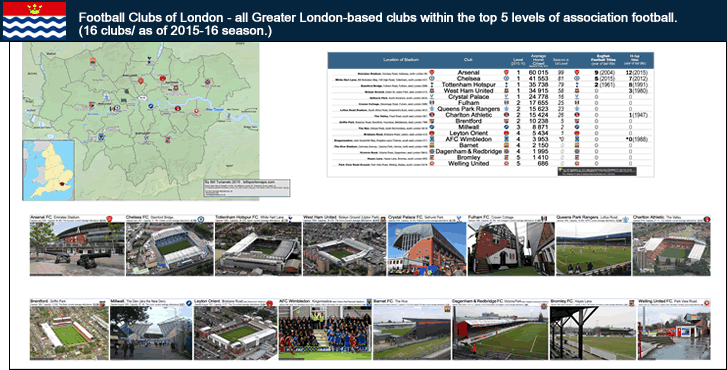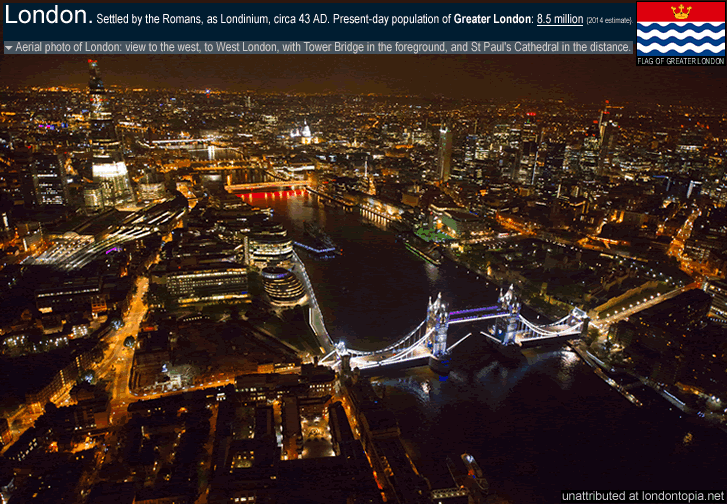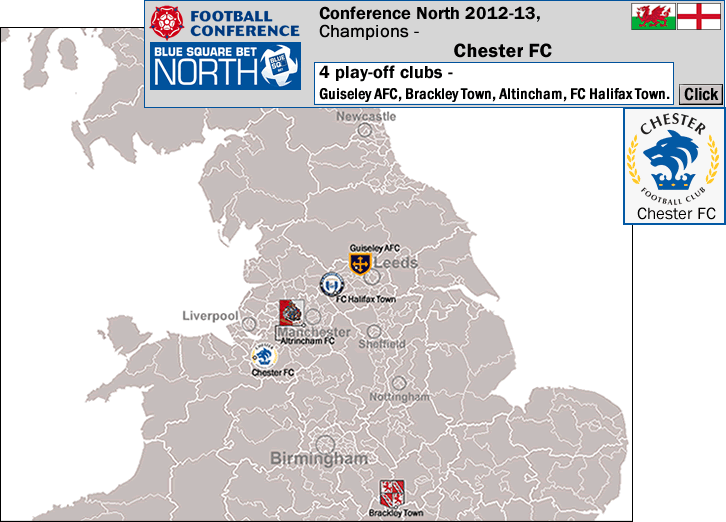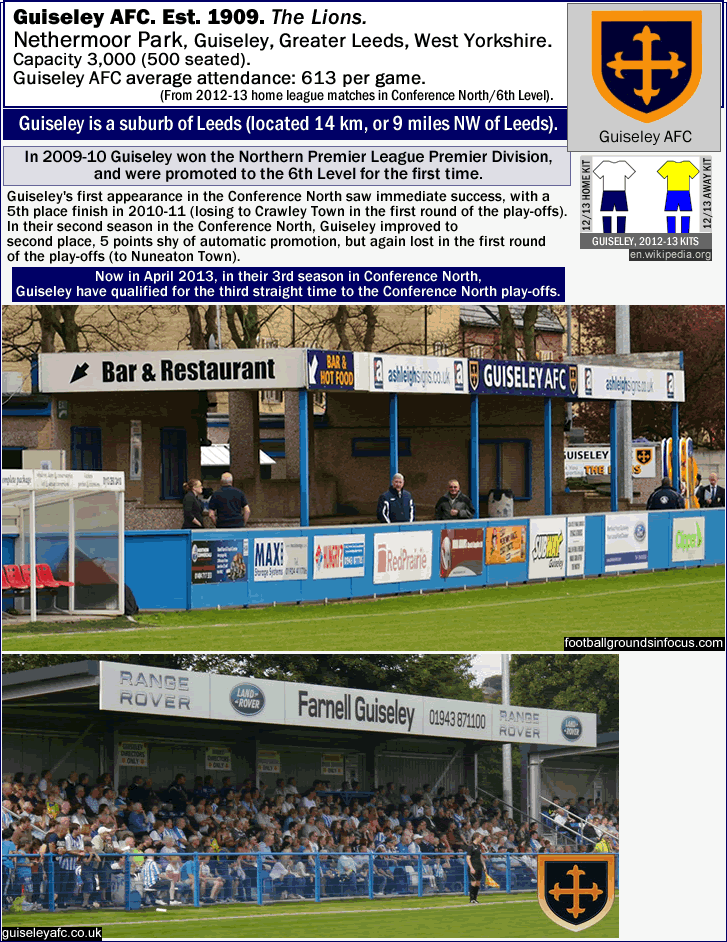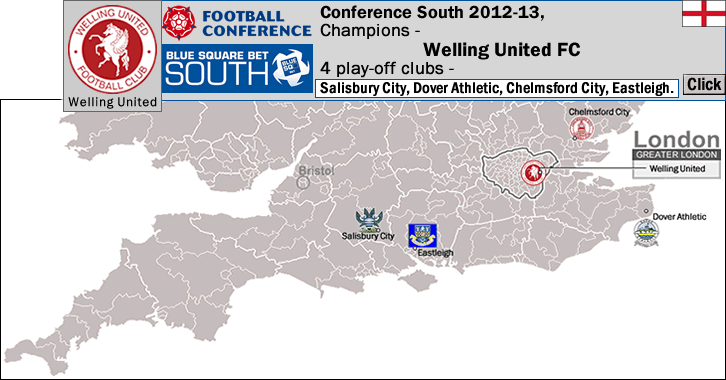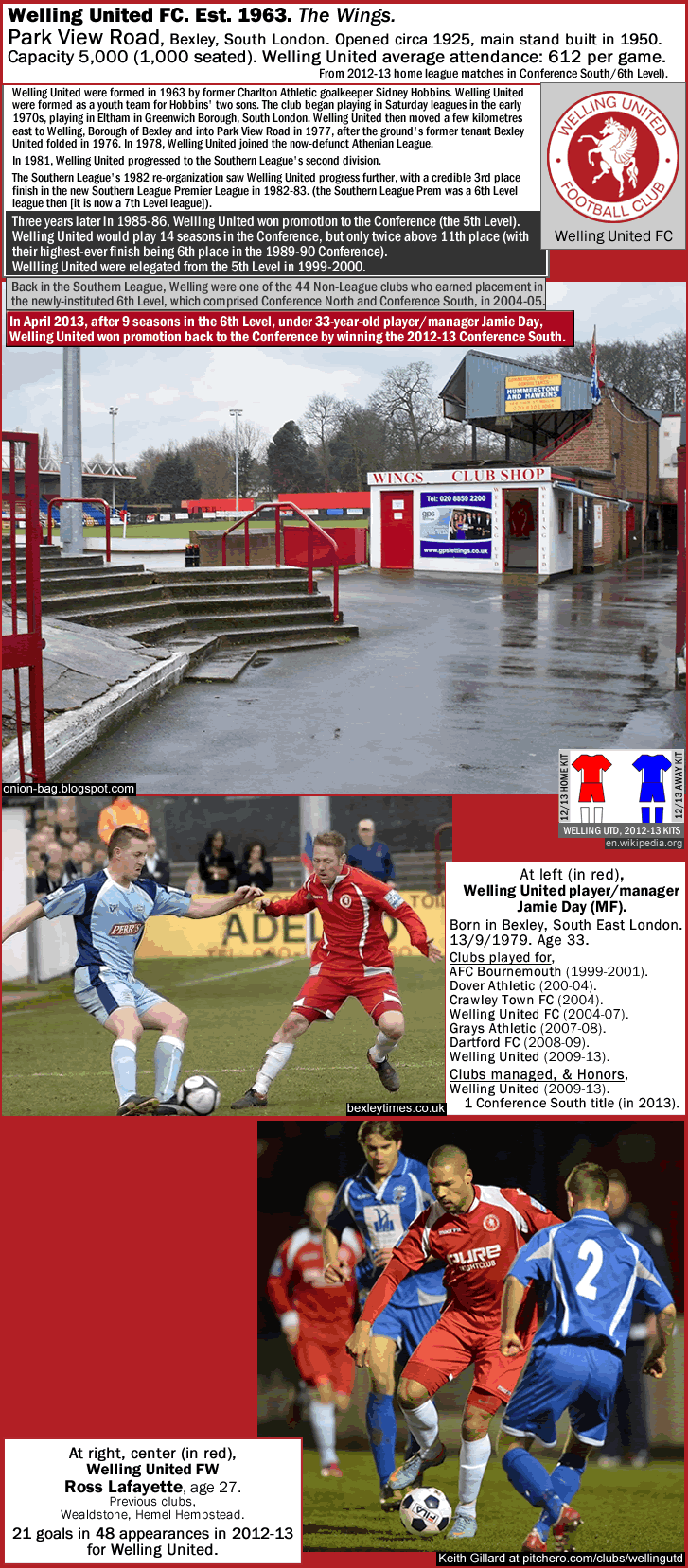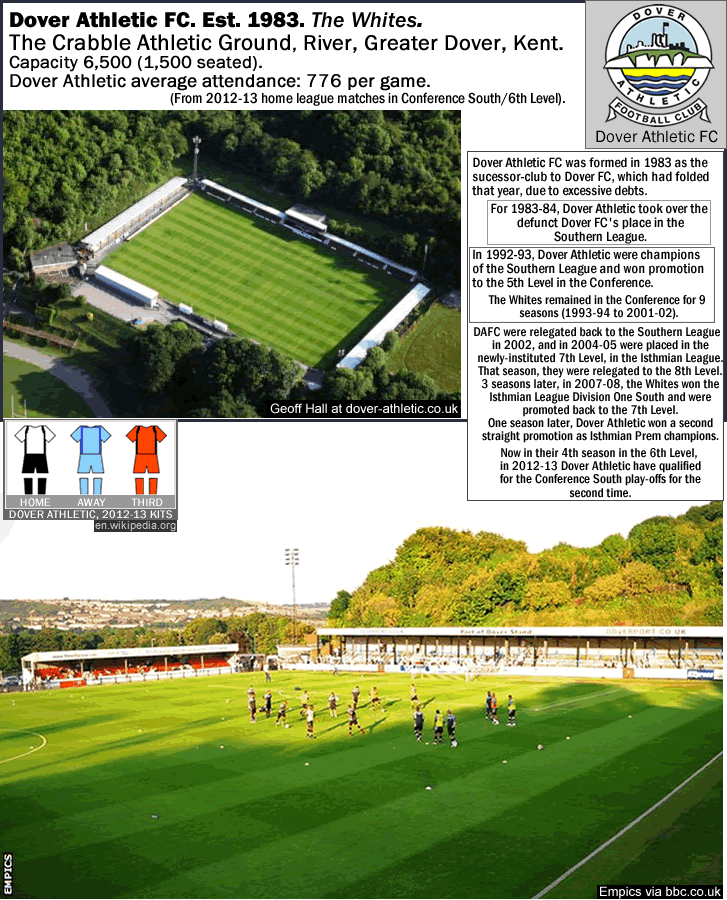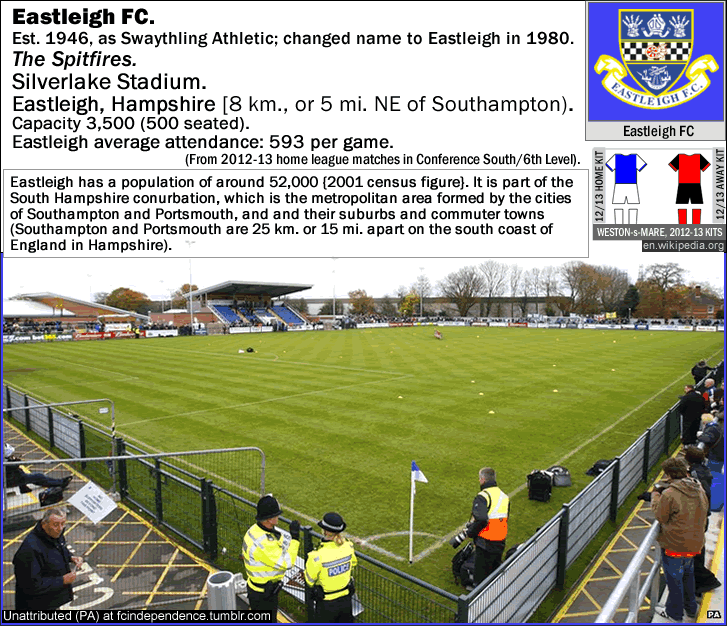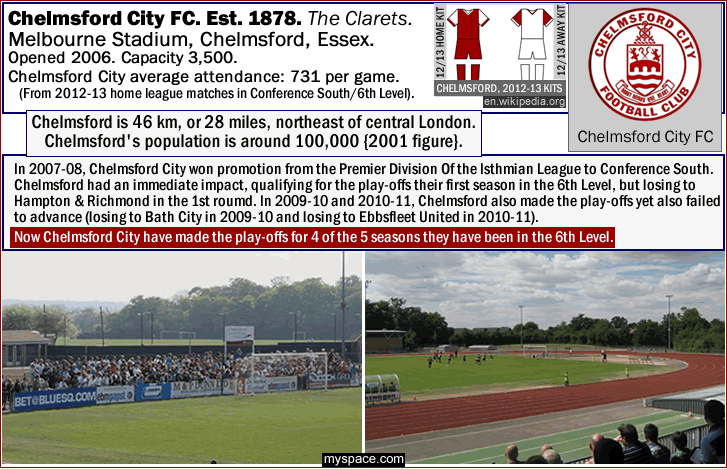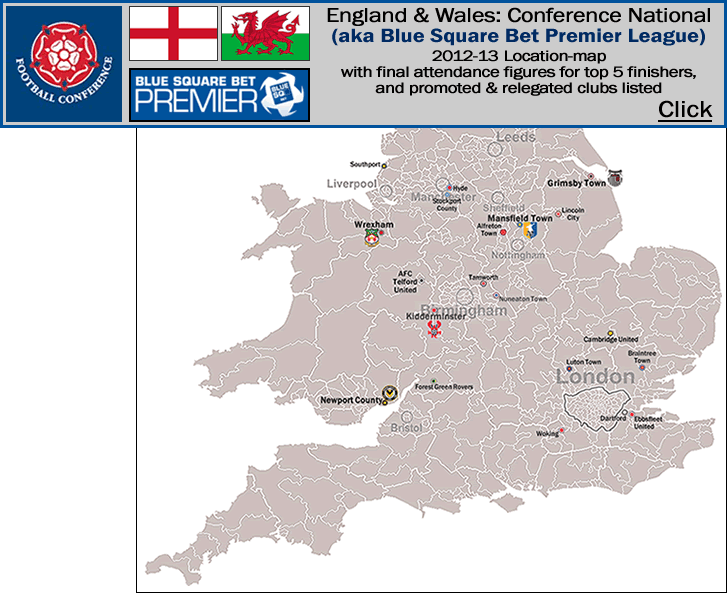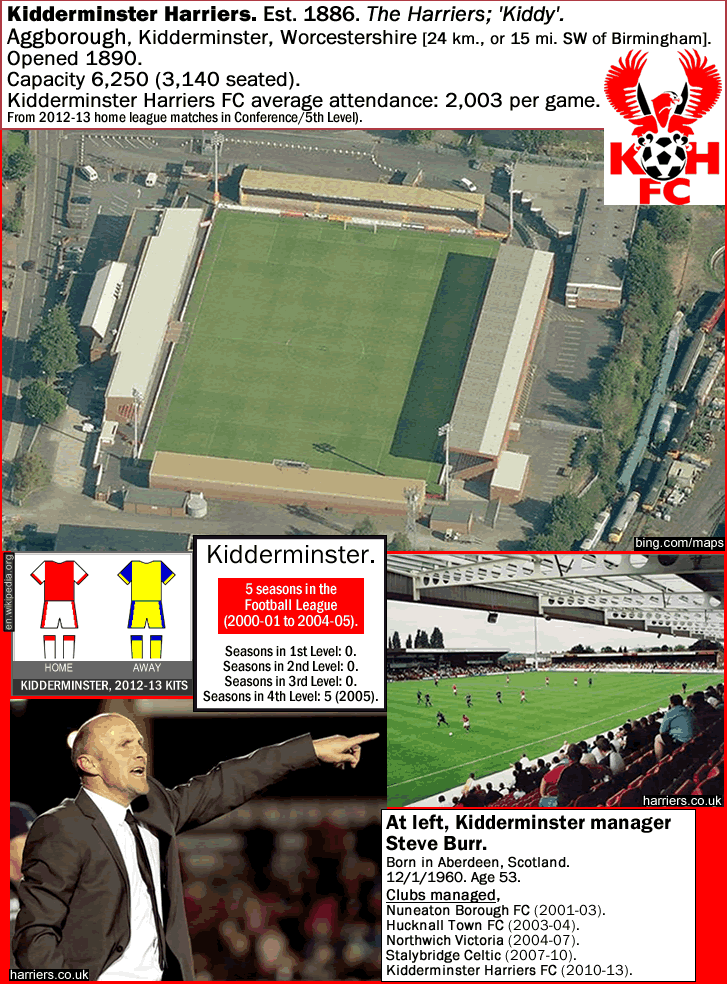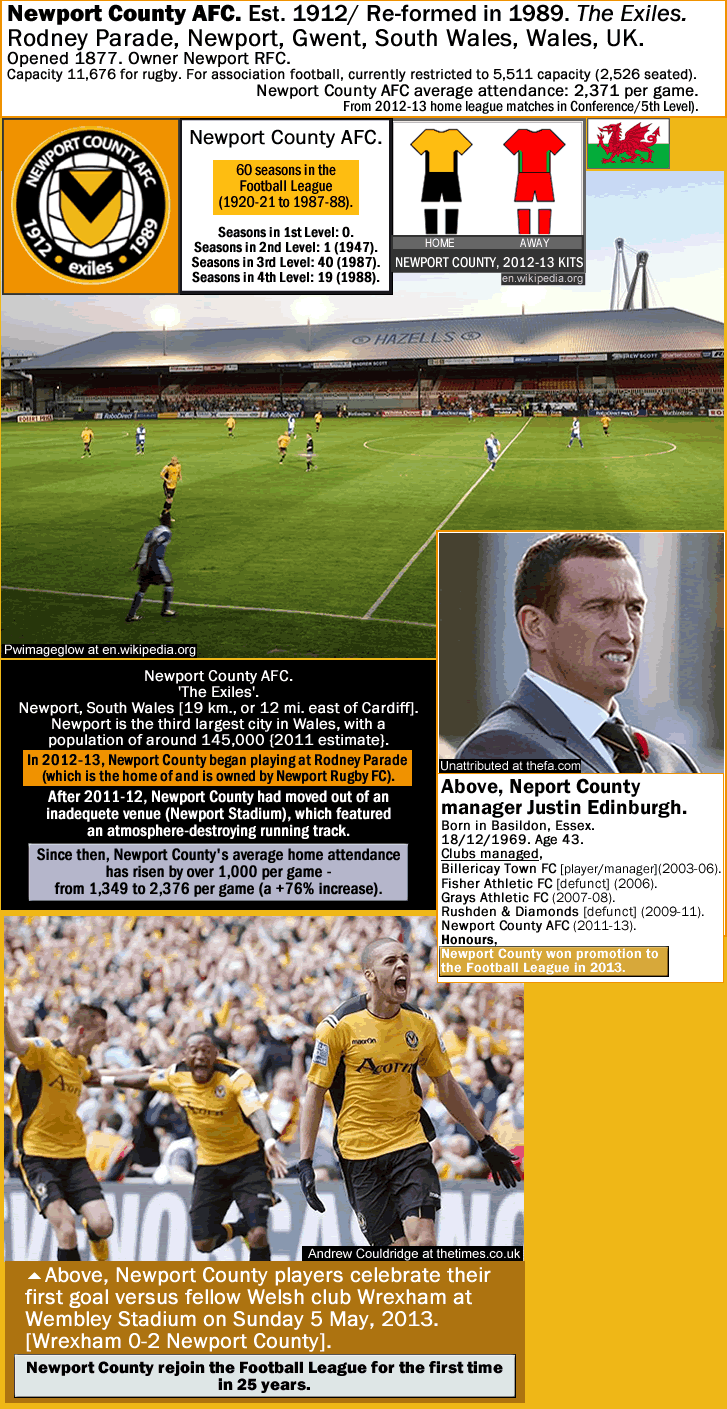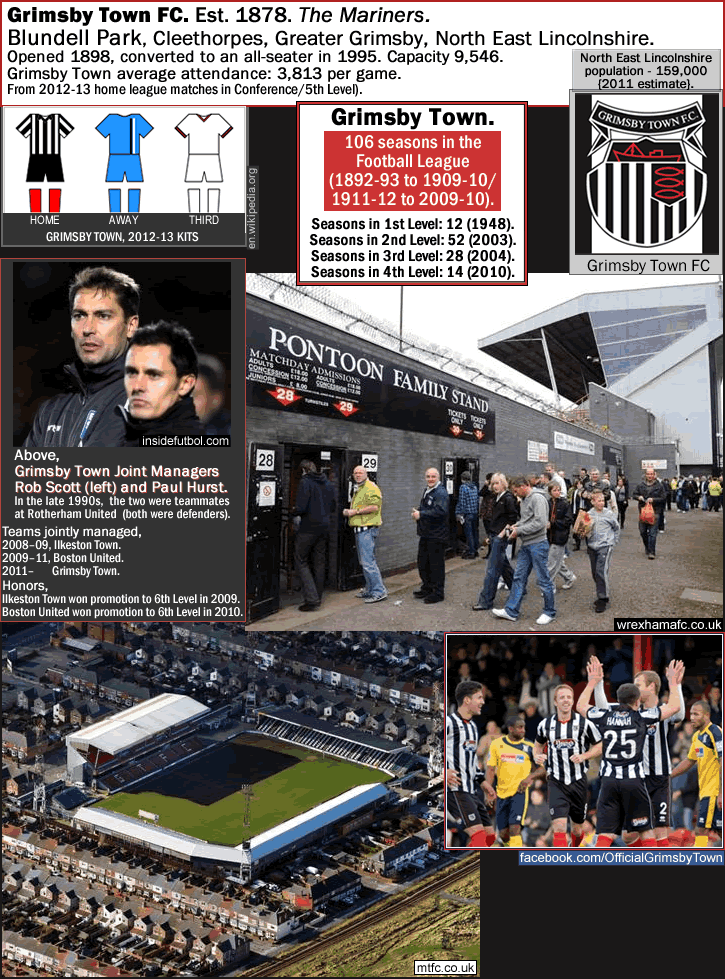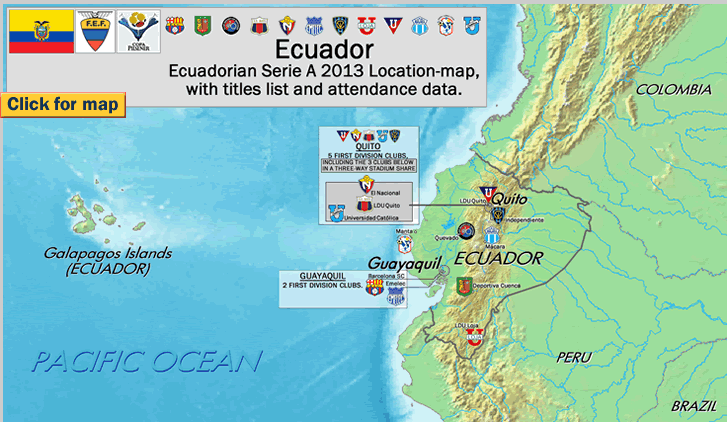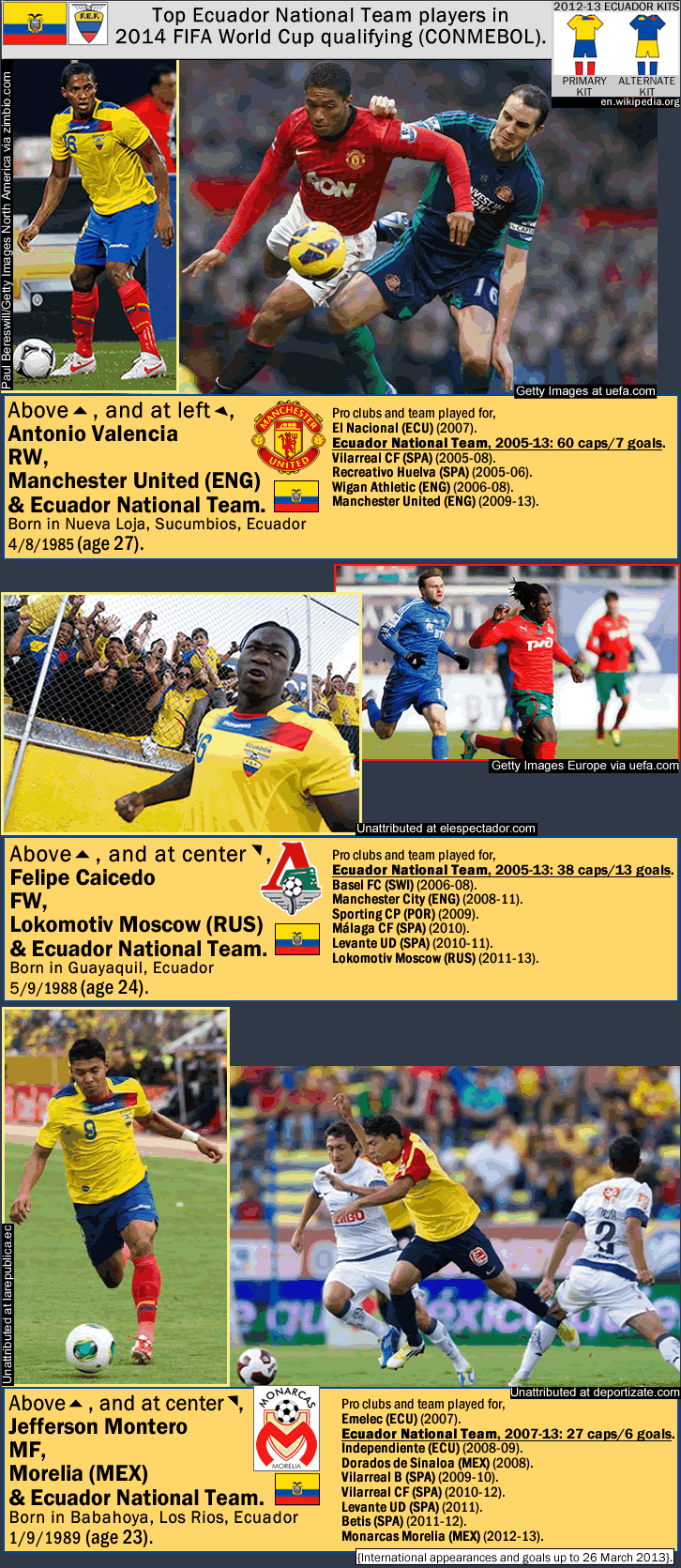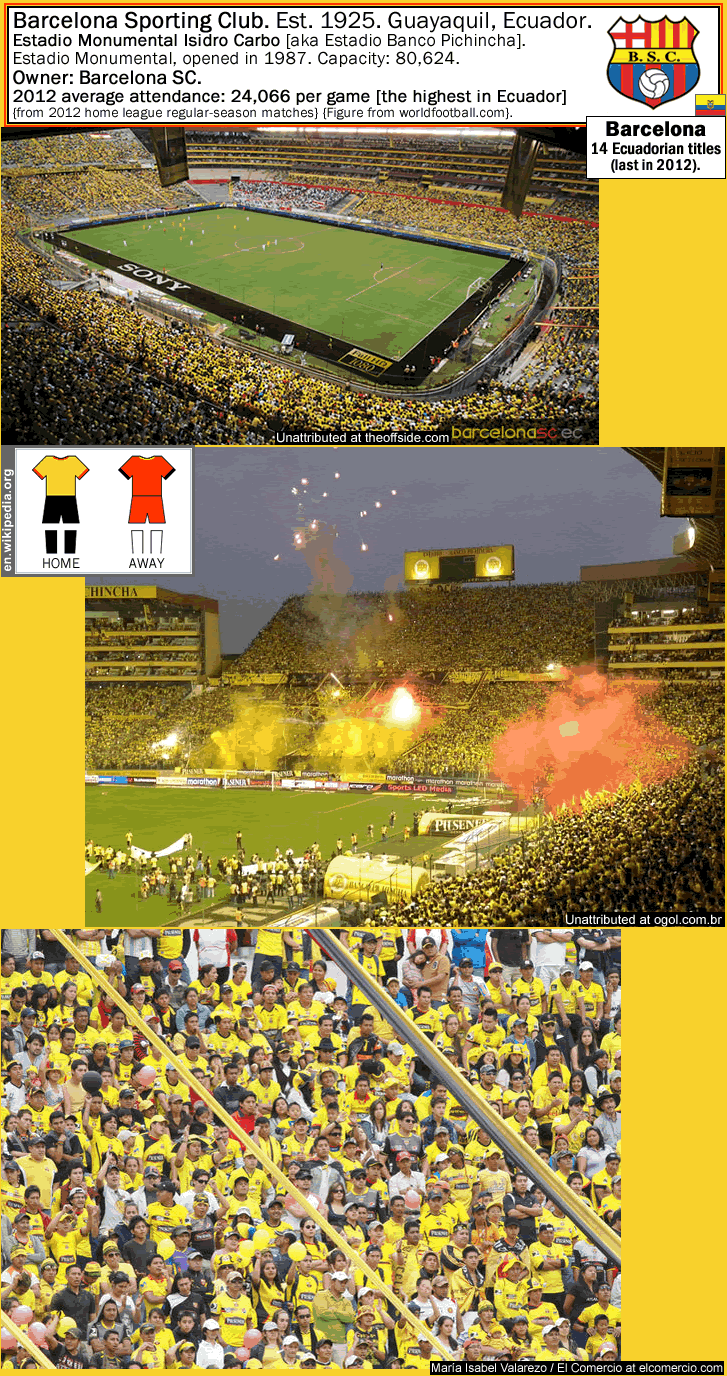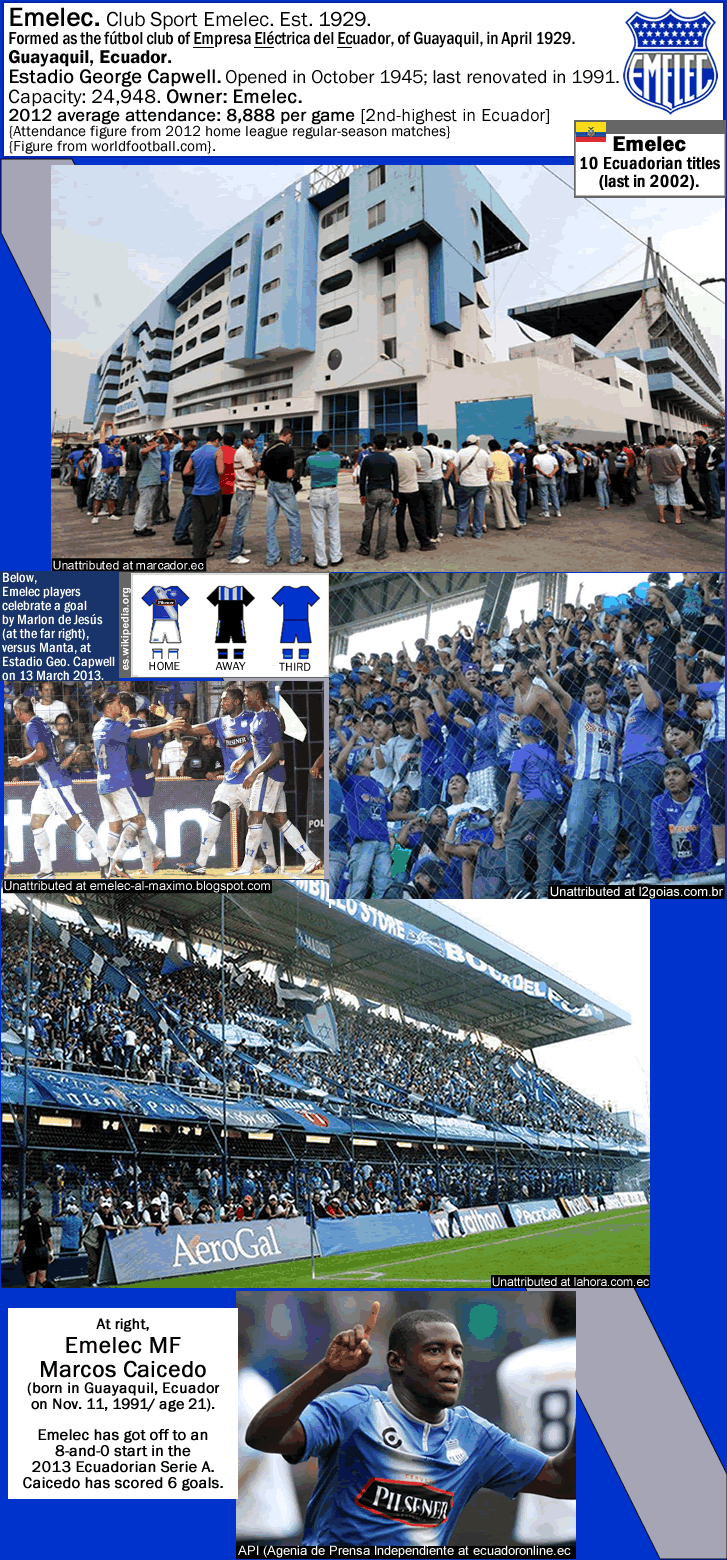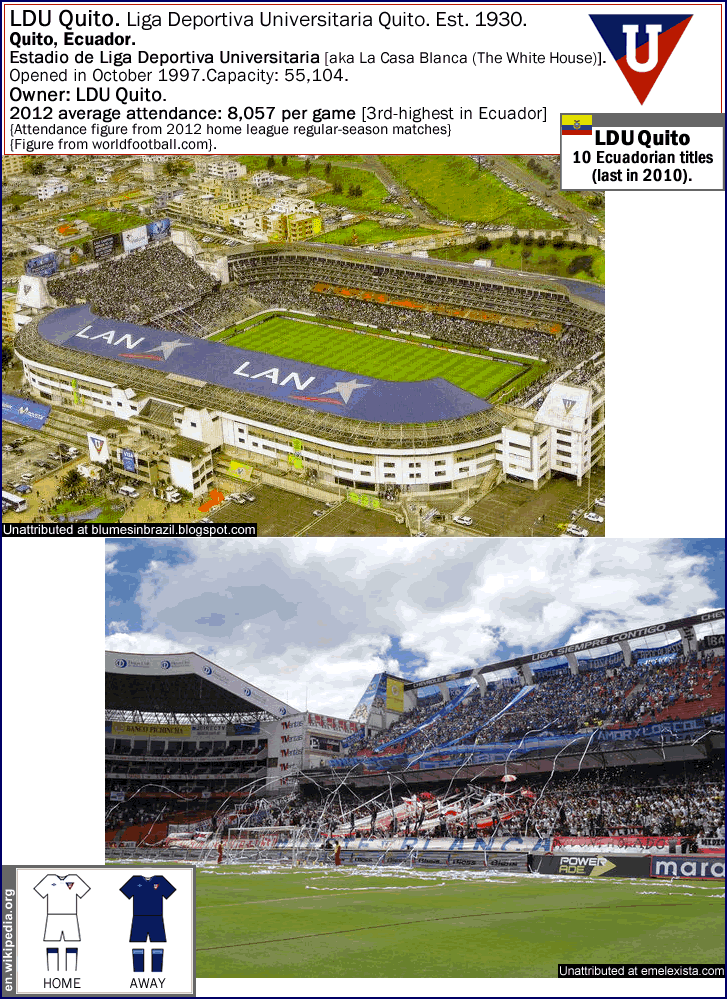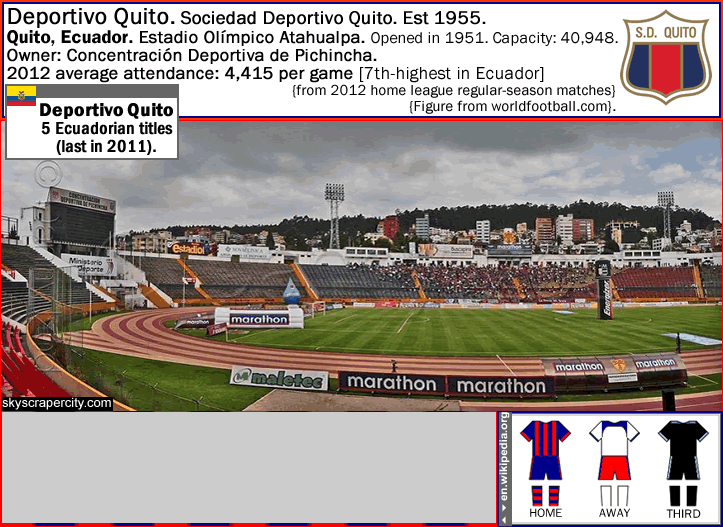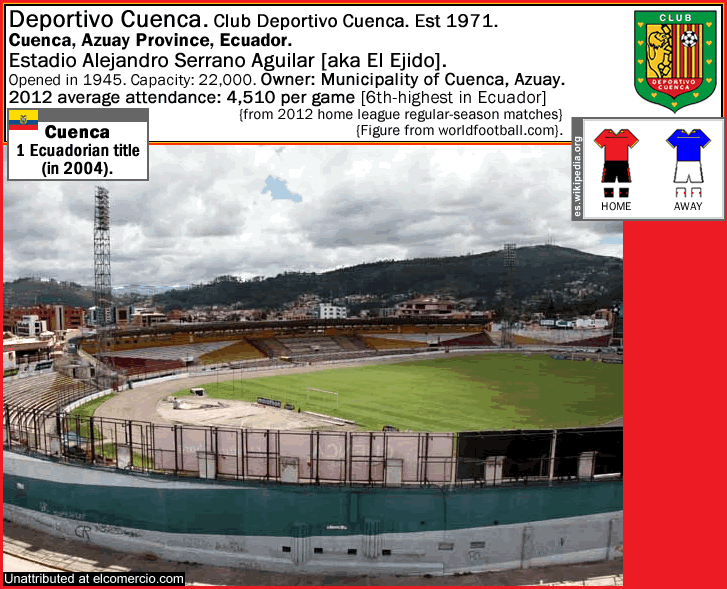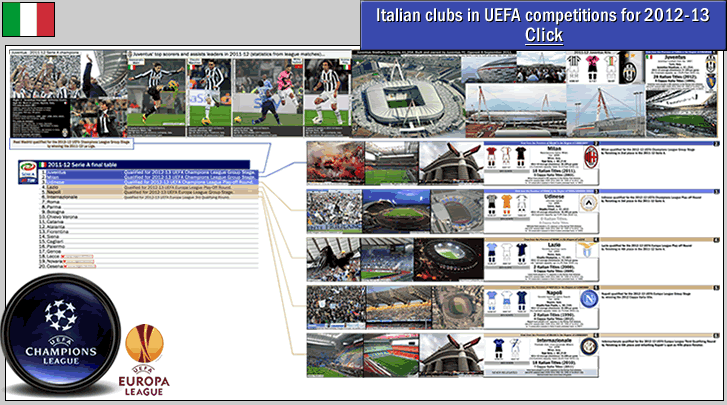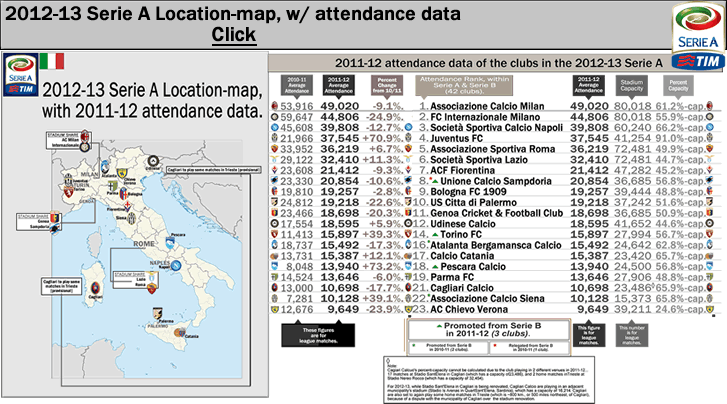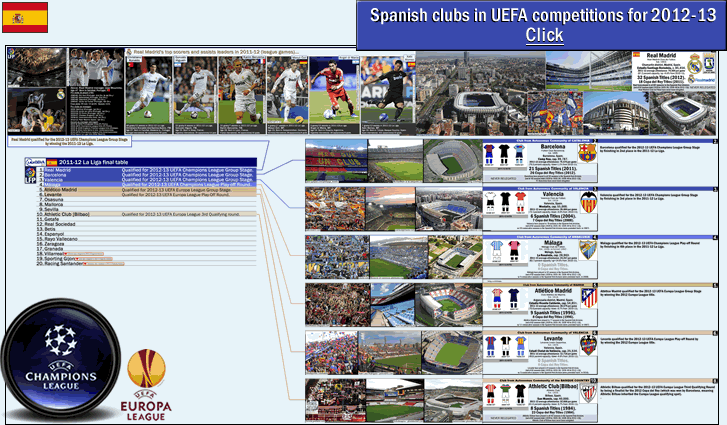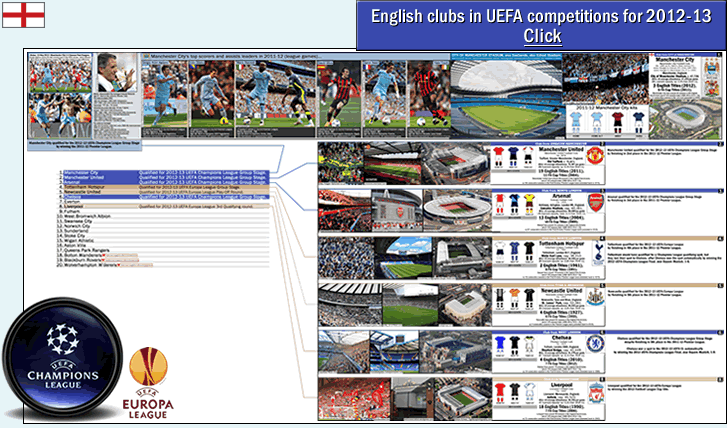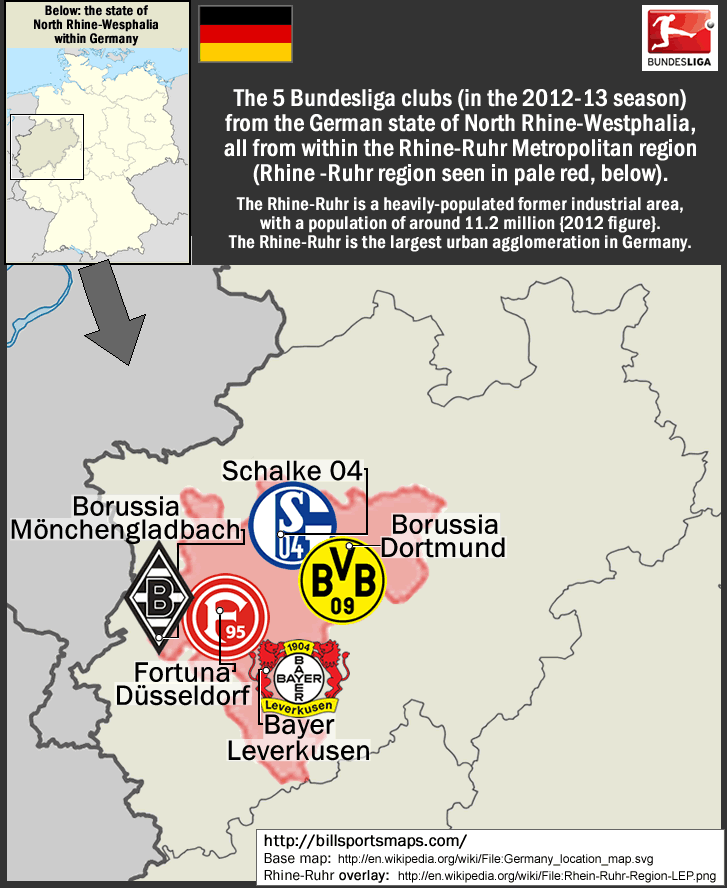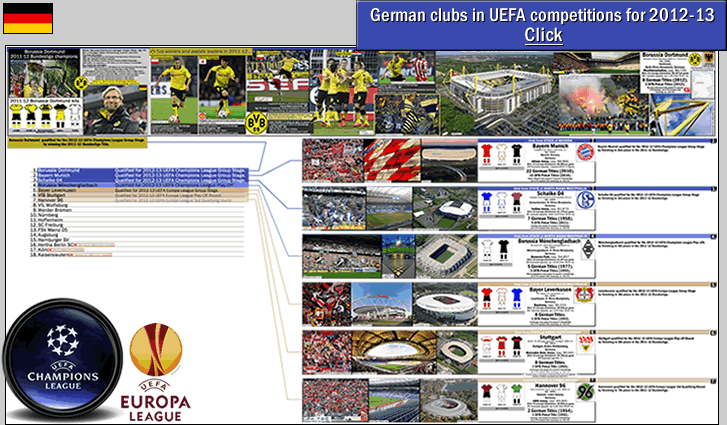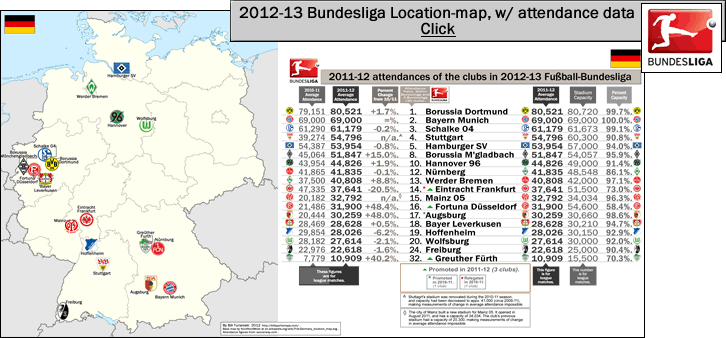
2012-13 Scottish Premier League: location-map with 2011-12 attendance data and 2012-13 home kit badges
…
…
This post is a continuation of my recent new category, ‘Eng-Map/Attendance/Kit Badges’, which is now called ‘England & Scotland – Map/Crowds/Kit Badges’. I decided to open up the category to include Scottish clubs because in my first post in this category, {which was on the 2012-13 Premier League here}, I mentioned Celtic and Rangers right off the bat (in the third paragraph in the above link). And I don’t have any other category which includes both English and Scottish clubs, so I thought I should have at least one.
The essence of this style of map is the depiction of facsimiles of each club’s current home jersey badges, and those badge-facsimiles can be seen at the top of the map page (with the clubs placed in alphabetical order).
From Historical Football Kits, ‘Clydesdale Bank Scottish Premier League 2012 – 2013 [the kits of all 12 Scottish Premier League clubs]‘ (historicalkits.co.uk).
…
The top 3 scoring leaders in the 2012-13 SPL (from matches up to 15 Dec.2012) -
Leigh Griffiths (of Hibs)
Billy McKay (of Inverness CT)
Michael Higdon (of Motherwell)

Photo credits above –
sportsmole.co.uk.
dailyrecord.co.uk.
Andrew Milligan/PA via guardian.co.uk/football/2012/nov/24 [Celtic 0-1 inverness].
…
The landscape of the Scottish Premier League changed drastically and overnight when Rangers FC imploded in April 2012 and Rangers Newco took their place. Rangers Newco might have taken over Rangers FC’s venue at Ibrox, and the re-constituted club might have taken over Rangers FC’s fan base. But Rangers Newco were most emphatically not allowed to take Rangers FC’s league place (no matter how hard certain elements tried). Rangers were forced to start at the foot of the Scottish football pyramid, in the 4th Level, in the Scottish Third Division, among clubs that averaged between 321 and 672 per game last season. So now Rangers Newco must work their way up the league ladder, and will not be back in the Scottish Premier League until 2015-16 at the earliest. In other words, Rangers have about a 99.9% certainty of being back in the SPL in 2015-16.
There was one immediate beneficiary of Rangers’ expulsion from the Scottish Premier League, and that of course was the extra promoted club. Dundee’s second-largest club, Dundee FC, were second place finishers in the 2011-12 Scottish First Division and were thus granted promotion to fill the spot in the league vacated by Rangers. It is Dundee’s first appearance in the top flight since 2004-05. Dundee FC and Dundee United are the two clubs in league football in Britain whose grounds are the closest together. Separated by just 100 meters (or 109 yards), Dundee’s Dens Park and Dundee United’s Tannadice Park are so close to each other they share the same road, about one city block apart.

Photo credit above -
thecourier.co.uk.
Here is the Bing.com Bird’s Eye satellite view of the two grounds, zoom via contols at top right, here, ‘bing.com/maps [Dens Park & Tannadice aerial view (satellite)]‘.
But aside from temporary attendance inflation in the lower leagues from games which involve Rangers playing away, and aside from the fact that Dundee FC will probably go straight back down to the second division (thereby benefiting Ross County and anyone else near the drop-zone come May 2013), there is a good chance pretty much no other club in Scotland will really benefit from Rangers’ expulsion. Because while it is true that Rangers’ banishment to the wilderness of lower-league Scottish football leaves a window of opportunity for some of the clubs in the Scottish Premier League, unfortunately for them the days when 2 Scottish clubs could make it to the UEFA Champions League group stage are now gone (for next season, anyway) . Due to the recent poor showing by Scottish clubs in Europe, Scotland’s UEFA coefficient has been dropping at an alarming rate. It went down 8 places last year, to 26th in Europe, between Serbia and Norway, and behind countries with little history of pro success in Europe such as Israel, Belarus, and Slovakia {see this, ‘UEFA_coefficient/Current_ranking‘ (en.wikipedia.org). Granted, Celtic has had recent Champions League success – they beat Barcelona en route to squeezing past Benfica to claim 2nd place in their group and make it to the 2012-13 UEFA Champions League Round of 16. So hopefully that 26th ranking will end up being Scotland’s nadir, and now Scottish clubs will start once again being competitive in Europe, and maybe in one or 2 years’ time Scotland will have re-claimed that second Champions League qualifying spot.
So really, the best that Motherwell or Hibs or Hearts or Kilmarnock or Aberdeen or Dundee United can hope for is second place and a chance to play in the UEFA Europa League, which they would qualify for anyway if they finished in 3rd place. Having said that, I should point out one scenario that could be developing, and that is the fact that manager Terry Butcher’s Inverness Caledonian Thistle, having recently beaten Celtic at Celtic Park in a league match for the first time ever, are currently in 3rd place. And if the plucky Highlands-based club (who have only played 8 seasons in the top flight) can hold on to third place, then a Highlands-based club will be playing in Europe for the first time ever next season.
Of course, there is the slight chance that Celtic could screw up at some point in the next two-and-a-half seasons and someone other than Celtic or Rangers could finally win the Scottish title (it last happened in 1985, when Alex Ferguson’s Aberdeen were champions). But don’t hold your breath. For the sake of Scottish football I really hope otherwise, but chances are Celtic will coast to 3 straight titles and Celtic manager Neil Lennon will become even more of an arrogant blowhard. Rangers Newco will get promoted for 3 straight seasons, and in 2015-16 it will be back to the boring pre-ordained two-horse race and the pointlessly sectarian status quo that is Old Firm-dominated Scottish football.
…
Here are the current league standings for the 4 divisions of Scottish league football.
‘Scottish Premier League, table, fixtures, results‘ (soccerway.com).
‘Scottish First Division, table, fixtures, results‘ (soccerway.com).
‘Scottish Second Division, table, fixtures, results‘ (soccerway.com).
‘Scottish Third Division, table, fixtures, results‘ (soccerway.com).
…
2012-13 Scottish Premier League: the 12 clubs’ home grounds, and the cities or towns the clubs are from
Note: Clubs are arranged below in order of their league place as of 15 December 2012.
As of 15 December 2012, 1st place, Celtic FC.
Celtic FC est. 1877. Celtic Park, capacity 60,355, opened in 1892; last renovated in 1994-98. Located in Parkhead (East End of Glasgow). Glasgow city population is around 509,000 {2011 estimate}. Glasgow Urban area population is around 1.1 million {2008 figure}. Glasgow metro area population is around 2.3 million {2004 estimate}. Scotland itself has a population of around 5.2 million [2011 estimate}, so around 41% of the entire Scottish population lives in the Glasgow metropolitan area (aka the Glasgow conurbation).
Below, a night-time view of Glasgow city center on the River Clyde. Photo by Jason Hawkes, here (photo gallery at telegraph.co.uk).
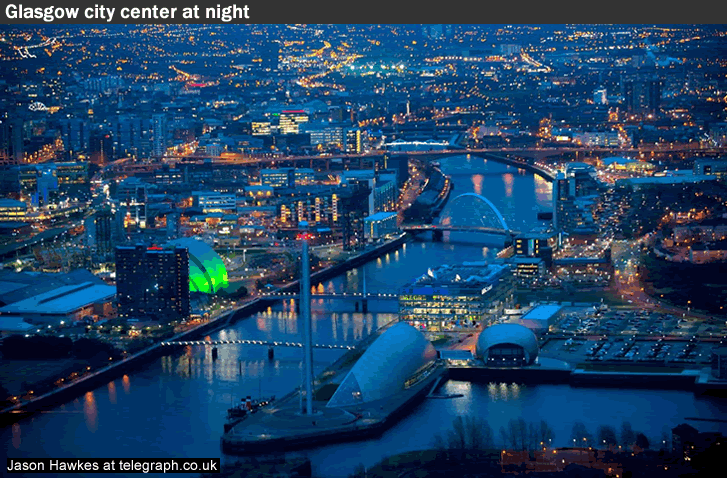
Photo credit above -
Jason Hawkes/Barcroft Media at telegraph.co.uk .
Celtic FC domestic honors:
43 Scottish titles (first in 1893; last in 2012).
29 Scottish Cup titles (first in 1892; last in 2011).
Celtic FC European honors: 1 European Cup title (1967).
Celtic are currently averaging 44,821 per game (from home league matches to 15 December 2012).
Below, Celtic Park (aka Parkhead), Parkhead, East End of Glasgow.
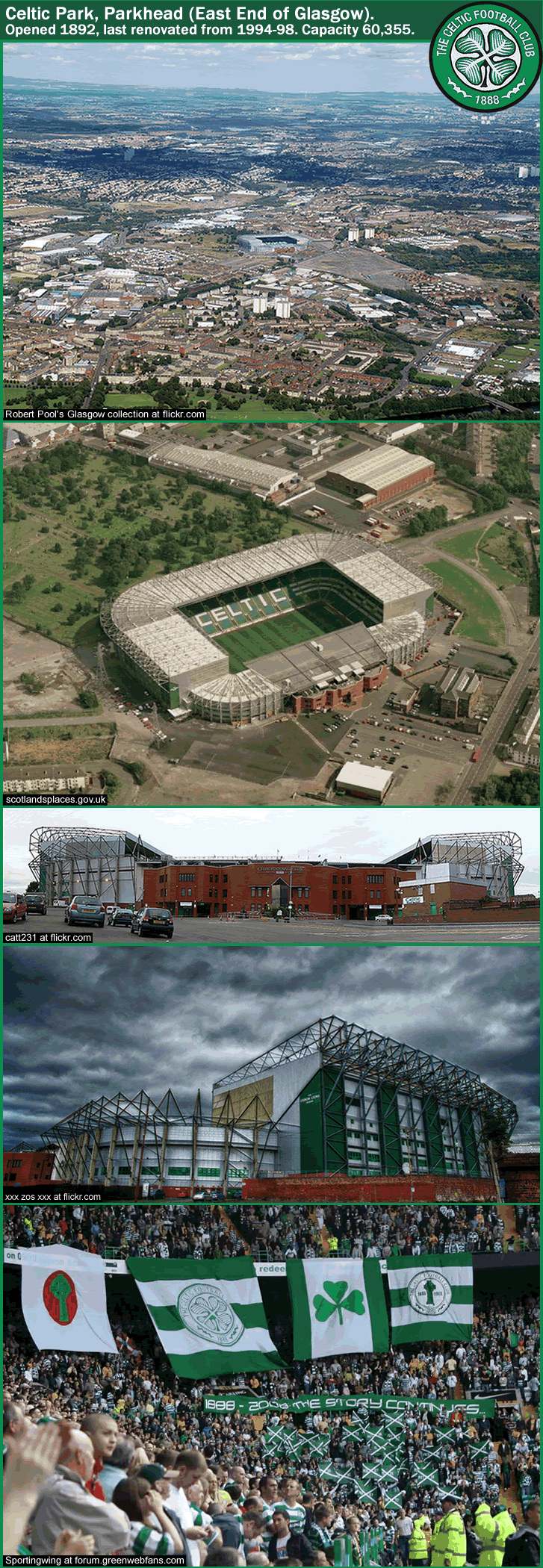
Photo credits above -
Aerial photo of Glasgow looking east to Parkhead, by Robert Pool’s Glasgow collection at flickr.com.
Aerial photo of Celtic Park from scotlandsplaces.gov.uk.
Exterior panoramic photo of Celtic Park by catt231 at flickr.com.
Exterior photo of Jock Stein Stand with a threatening sky above by xxx zos xxx at flickr.com
Photo of Celtic supporters and giant banners at a Celtic Park-hosted Champions League match (circa 2007-08) uploaded by Sportingwing at forum.greenwebfans.com.
…
As of 15 December 2012, 2nd place, Motherwell FC.
Motherwell FC were established in 1886. Fir Park Stadium, Motherwell, North Lanarkshire. Opened in 1895, last renovated in 1995. Capacity: 13,732. Motherwell is just 11 miles (or 18 km.) south-east of Glasgow. Motherwell is 33 miles (or 54 km.) south-west of Edinburgh.
Motherwell FC domestic honors: 1 Scottish title (in 1932). 2 Scottish Cup titles (in 1952 and in 1991).
Motherwell FC current average attendance: 5,002 (from home league matches to 15 Dec.2012).
Motherewell finished in 3rd place last season, and look like they have a solid shot at qualifying for Europe for the second straight season. Since 30 Dec. 2010, Motherwell’s manager has been ex-Bradford City manager and Rangers MF Stuart McCall, who had left Bradford in May 2010 on mutual consent and on a down note to be sure, failing to get the most-supported-4th-division club in England promoted for 3 straight seasons. But McCall has since then resurrected his standing as a manager by leading Motherwell to a solid 3rd place finish in 2011-12, and Motherwell now sit second. To be fair, McCall walked into a decent set-up, because the amber-and-claret clad Motherwell have a recent history of punching above their weight, with 3 consecutive top-half finishes and two 3rd place finishes in 5 years (since 2007-08). The Steelmen manage to do this on crowds of around just 5 to 6 thousand, and despite being hampered by the fact that they are stuck deep in the shadow of the Old Firm – Motherwell is just 11 miles (or 19 km.) southeast of Glasgow city center.
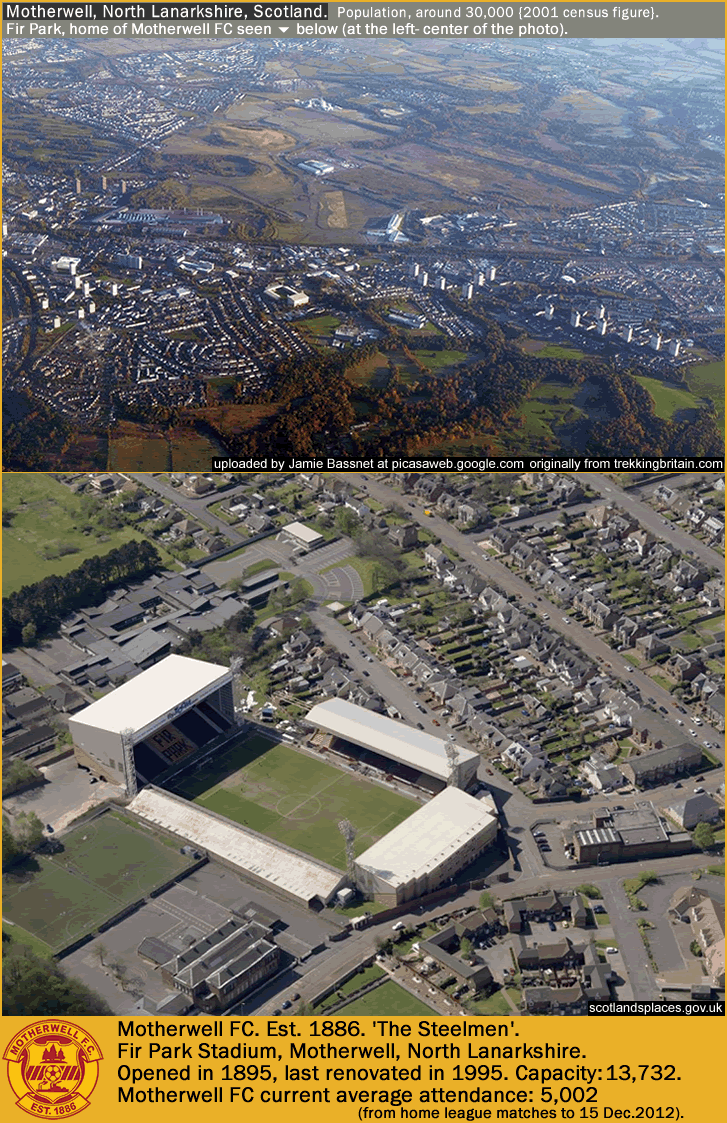
Photo credits above -
Aerial photo of Motherwell uploaded by Jamie Bassnet at picasaweb.google.com, originally from trekkingbritain.com.
Aerial photo of Fir Park from scotlandsplaces.gov.uk.
…
As of 15 December 2012, 3rd place, Inverness Caledonian Thistle FC.
Caledonian Thistle FC were established in 1994, from a merger between Caledonian FC and Inverness Thistle FC (both clubs were members of the Highland Football League). The merger came about because of a vacancy and a re-structuring in Scottish football, and in 1994 Caledonian Thistle FC were elected to the Scottish Third Division along with Highland derby rivals Ross County FC. Caledonian Thistle FC’s name was changed 2 years later in 1996 to Inverness Caledonian Thistle FC, at the request of Inverness District Council, who had contributed £900,000 to the development of the club’s ground. Inverness CT play at Caledonian Stadium, capacity 7,753. Opened in 1996, the stadium was renovated in 2004-05, when Inverness CT played in the Scottish Premier League for the first time. The club had a 5 season spell in the Scottish top flight from 2004-05 to 2008-09, were relegated in May 2009, then won promotion back at the first try in 2009-10, and now are in their 8th season of top flight football. Inverness Caley Thistle’s highest league finish was 7th place, twice, in 2005-06 and 2010-11. Inverness CT’s highest average attendance was 5,061 per game in 2005-06.
Inverness CT current average home attendance: 4,032 per game {from home league matches to 15 Dec. 2012}.
Inverness is one of Europe’s fastest-growing cities. In the 2000 to 2010 time period, it had a 14.1% increase in population, to 58,963. Since 2010, about 3,000 more people have moved to Inverness…in mid-2011, the Highland Council Area released this data, which estimates Inverness’ population at 62,093 {2011 estimate}. In the larger administrative area surrounding Inverness, there are around 74,000 people {2011 estimate}. That 74,000 in the Greater Inverness metro area is one-third of the entire population of the Highland Council Area. Highland Council Area is the largest of the 32 Council Areas in Scotland, at 11,838 square miles (or 30,659 kilometers squared) and has a very low population-density, with only around 221,000 in the whole Highlands district {2010 estimate}. [{Here is the Highland Council Area's page on en.wikipedia.org, 'Highland (council area)' (en.wikipedia.org). To give you an idea of how thin on the ground folks are up there in the Highlands, the Highland Council Area, with around 220,000 people, is a little smaller than the state of Maryland in the USA; and a little larger than the nation of Lebanon - but Maryland has around 5.8 million people {2011 estimate}; and Lebanon has around 4 million people {2008 figure}.]
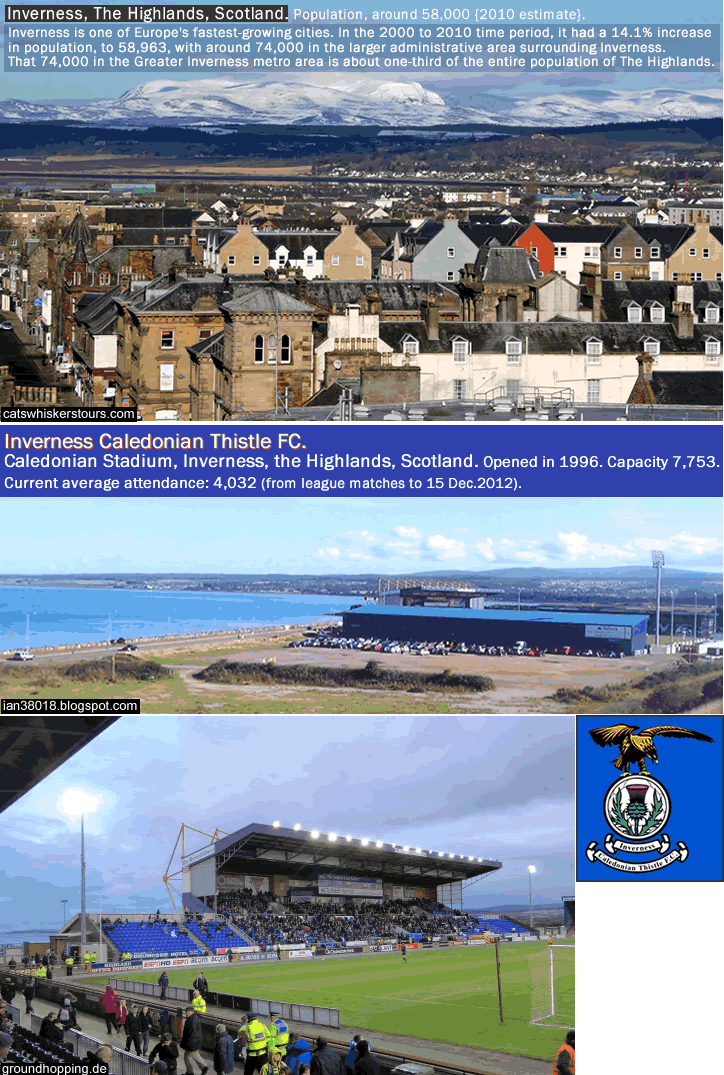
Photo credits above -
catswhiskerstours.com/inverness-scotland.
Caledonia Dreaming or Ian38018 Football Travels/ Inverness CT – Caledonian Stadium, ian38018.blogspot.com/2011/05/inverness-ct-caledonian-stadium.html.
groundhopping.de/inverness.htm.
…
As of 15 December 2012,4th place, Hibernian FC.
Hibernian FC est. 1875. Easter Road, capacity 20,421, opened in 1893; last renovated from 1995-2010. Located in the Leith area of Edinburgh (north of the city center).
Edinburgh is 42 miles (or 68 km.) east of Glasgow.
Situated on the south shore of the Firth of Forth, Leith is the port of Edinburgh, and has been, officially, since 1329. The port of Leith handles over 1.5 million metric tonnes per year. In recent years redevelopment has seen some of the seedier parts of the Leith area gussied up, but the area still retains a rough blue collar edge. Leith is about 3 miles or 5 km. north of central Edinburgh [Edinburgh is 42 miles (68 km.) east of Glasgow]. Leith’s population is no longer recorded as it was merged with Edinburgh in 1920 (despite local residents back then voting overwhelmingly against the consolidation). Edinburgh city population is around 495,000 {2011 estimate}, making it the second largest city in Scotland. Edinburgh’s metro area population is around 783,000 {2007 estimate}.
Hibernian FC domestic honors: 4 Scottish titles (first in 1903; last in 1952). 2 Scottish Cup titles (first in 1882; last in 1902).
Hibernian are currently averaging 10,455 per game (from home league matches to 15 December 2012).

Photo credits above -
Photo of Easter Road in Leith taken from Arthur’s Seat [the plateaued hill of solid rock in Edinburgh] by TorryBattery at flickr.com.
Black & white photo of Easter Road in the 1950s uploaded by Fraser P at flickr.com
Cira 1980s photo of theEast Stand also uploade by Jmorrison230582 at en.wikipedia.org.
Circa 2005 aerial photo of Easter Road by Dave_Barlow at flickriver.com.
New aerial photo of Easter Road from scotlandsplaces.gov.uk.
…
As of 15 December 2012, 5th place, St. Johnstone FC.
St. Johnstone FC est. 1875. McDiarmid Park, capacity 10,673, opened in 1989. Located in Perth, Perth & Kinross and situated on the River Tay. Perth is 48 miles (77 km.) north-east of Glasgow. Perth is about 38 miles by road (or about 62km. by road) north-west of Edinburgh. Perth city population is around 44,000 {2008 estimate}.
St. Johnstone are currently averaging 3,922 per game (from home league matches to 15 December 2012).
St. Johnstone FC’s name is a reference to the old way of referring to the town of Perth. From the official St. Johnstone site (perthstjohnstonefc.co.uk), here is an excerpt from the club’s ‘History‘…{excerpt}…’St Johnstone Football Club derives its name from Saint John’s Toun (town) which was the ancient name for the City of Perth and was founded by a group of young men from the cricket team of the same name who were looking for a winter pastime.’…{end of excerpt}.
The name Perth comes from the Pictish word for a wooded area or copse. There has been settlement in Perth since prehistoric times, starting on a raised mound on the River Tay that could be forded at low tides. Mesolithic hunter-gatherers who lived there can be dated back to 8,000 years ago. Neolithic standing stones in the area can be dated back to 6,000 years ago. Perth was home to the Stone of Destiny, also called the Stone of Scone, which was, around 900 years ago, situated in Scone Abbey, and was where the King of Scots was crowned. The Stone of Destiny was captured by Edward I of England in 1296, as spoils of war, and was taken back to Westminster Abbey where it is situated to this day. The Stone of Destiny had given the town early importance, and even after the English stole the Stone away, Perth retained regal status – Perth was often referred to as the capital of Scotland in medieval times because of the frequent residence of the royal court there. William the Lion (Scottish king from 1165 to 1214) gave the town Royal Burgh status in the 12th century. The town became one of the richest burghs in the country, doing trade with France, the Low Countries and with the Germanic, Scandinavian, and Baltic ports of the Hanseatic League. Circa 1559-60, the town had a vital role in the Scottish Reformation, with a sermon given by John Knox at St. John’s Kirk in Perth contributing to the social unrest that culminated with Scotland’s break with the Vatican and with Scotland’s escape from being a vassal-state of France. Owing to it’s central location, Perth became a key transport center with the coming of the railways in the mid-19th century. Industries the town had then included linen production, leathermaking, and whiskey distilling. Today, some of the town’s largest employers after the Perth & Kinross Council (which employs 6,000) include the UK’s largest renewable-energy producer SSE and the insurance multi-national Aviva.

Photo credits –
Photo of Perth on the River Tay by Boston Runner at flickr.com.
Aerial photo of north-west outskirts of Perth including McDiarmid Park by Vic Sharp at flickr.com.
Photo of The Main (West) Stand. at McDiarmid Park by Bas at myfootballtravels.com/2009/12/mcdiarmid-park-st-johnstone-v-st-mirren.
…
As of 15 December 2012, 6th place, Dundee United FC.
Dundee United FC est. 1903. Tannadice Stadium, capacity 14,209, opened in 1883; last renovated from 1992-97. Dundee is in the eastern central Scottish Lowlands on the north bank of the Firth of Tay (the Firth of Tay is a sea bay that feeds into the North Sea). Dundee is around 46 miles by road (or around 76 km. by road) north of Edinburgh. Dundee City population is around 152,000 {2008 estimate}, making it the fourth largest city in Scotland.
Dundee United FC domestic honors: 1 Scottish title (in 1983). 2 Scottish Cup titles (in 1994 and in 2010).
Dundee United are currently averaging 7,970 per game (from home league matches to 15 December 2012).
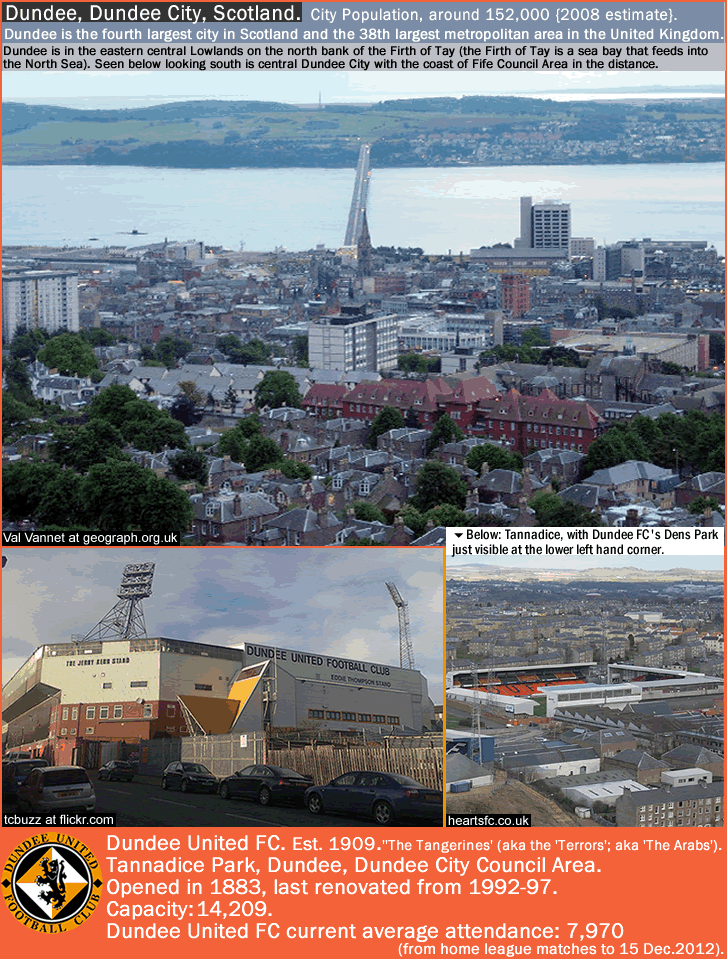
Photo credits above -
Val Vannet at geograph.org.uk.
tcbuzz at flickr.com.
heartsfc.co.uk.
…
7th place, Aberdeen FC.
Aberdeen FC est. 1903. Pittodrie Stadium, capacity 22,199, opened in 1899; last renovated in 1992-93. Located in Aberdeen, Aberdeen City, on the north east coast of Scotland on the North Sea, around 110 miles by road (or around 175 km. by road) north-east of Edinburgh. Aberdeen is around 145 miles (or around 235 km.) north-east of Glasgow. Aberdeen city population is around 220,000 {2011 estimate}, making it the third largest city in Scotland.
Aberdeen FC domestic honors: 4 Scottish titles (first in 1950; last in 1985). 7 Scottish Cup titles (first in 1947; last in 1990).
Aberdeen FC European honors: 1 European Cup Winners Cup title (1983).
Aberdeen are currently averaging 10,948 per game (from home league matches to 15 December 2012).
Aberdeen is located on the north-east coast of Scotland on the North Sea. The discovery of oil in the North Sea in the late 20th century has largely fueled the economic boom of the city. Aberdeen is Scotland’s 3rd most populous city, and the United Kingdom’s 29th most populous city, with an official population estimate of 220,420 {2011 figure}.
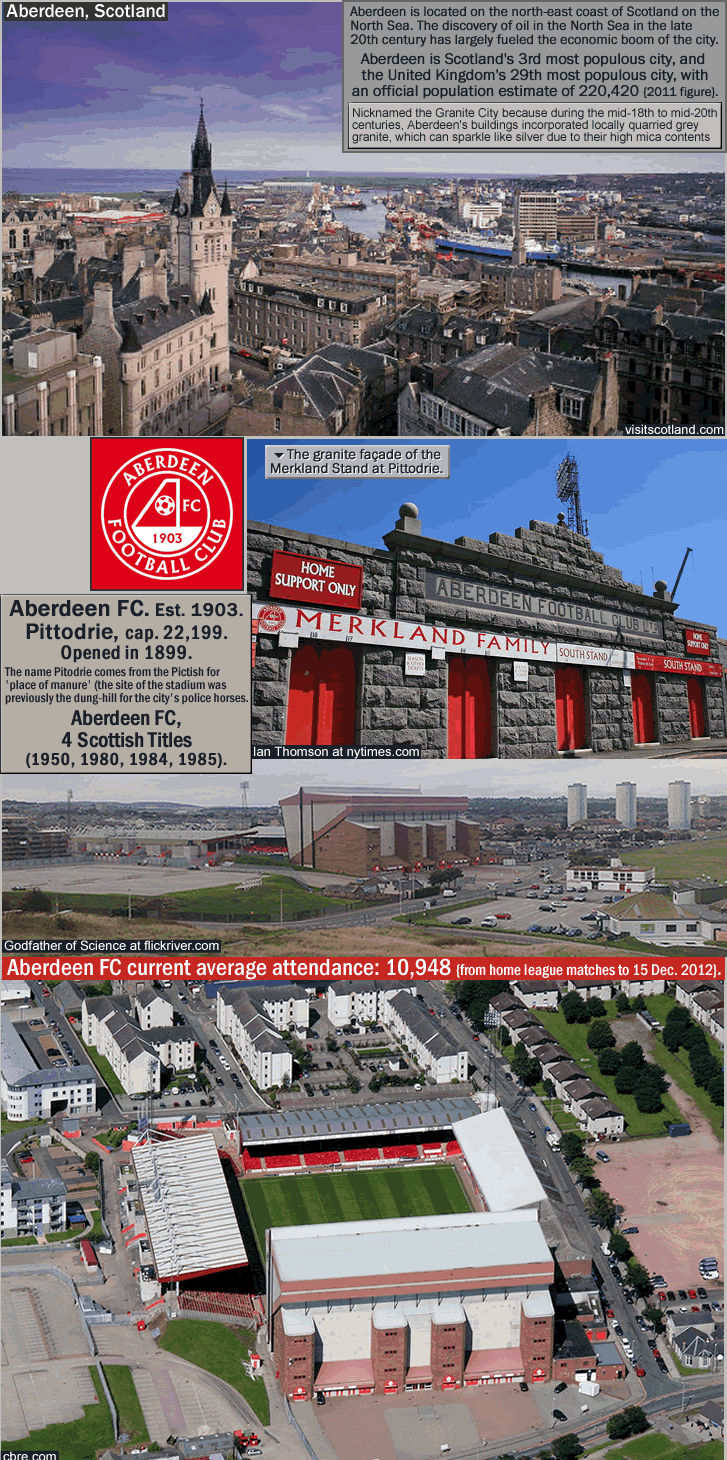
Photo credits above – visitscotland.com.
Ian Thomson at goal.blogs.nytimes.com/2012/02/02/aberdeen-looks-to-new-stadium-to-reignite-old-firm-challenge/.
Exterior photo of Pittodrie by Godfather of Science at flickriver.com [scro;; nine-tenths of the way down the page for this photo].
Aerial photo from cbre.co.uk.
…
As of 15 December 2012, 8th place, Kilmarnock FC.
Kilmarnock FC were established in 1869, and are the oldest Scottish football club. Kilmarnock play at Rugby Park, which was opened in 1899, and was last renovated in 1994-95. Capacity: 18,128. Kilmarnock is 20 miles (or 32 km.) south-west of Glasgow. Kilmarnock is 57 miles (or 92 km.) west-south-west of Edinburgh.
Kilmarnock FC domestic honors: 1 Scottish title (in 1965). 2 Scottish Cup titles (first in 1920; last in 1997).
Kilmarnock FC current average attendance: 5,077 (from home league matches to 15 Dec. 2012).
Kilmarnock had the worst percent-capacity figure in the Scottish Premier League in 2011-12, drawing 5,537 per game in their 18,128-capacity stadium which resulted in an embarrassing 30.5 percent-capacity. A 30 percent-capacity figure is the sort of percent-capacity figure you find with medium-sized down-on-their-luck third or fourth division clubs in England (such as, currently, Notts County, Coventry City, Port Vale, and Plymouth Argyle). But those are medium sized clubs that are stuck in the lower leagues. A 30 percent-capacity is not the sort of figure you should be finding at a first division club that has played in the top flight for over 8 decades, like Kilmarnock (2012-13 is the 85th season that Kilmarnock have been in the first division). Back in the late 1940s and up to the mid-1950s, Kilmarnock had pretty decent drawing power and drew as high as 15,5044 per game (in 1954-55). But historically, many British clubs’ highest-ever average attendance figures come from the 1946-57 to mid-1950s post-War surge in football attendance. And you can see the general downward trend after that, because when they won their only Scottish First Division title in 1964-65, Kilmarnock’s average attendance was 5,000 per game less – just 10,476. So seventeen years ago, the people within the club who made the decision to put Kilmarnock’s current capacity at 18,000 should have noted this. Namely, that their highest-drawing days were in the past and that even winning the Scottish title couldn’t push the club’s drawing-capacity above 10,000 per game. Kilmarnock have only drawn higher than that once since that title winning season of 64/64 – in 1998-99 when they drew 10,981 per game and finished in 4th place. And since then you can see an example of the most recent downward trend in Scottish top-flight attendance because when Kilmarnock had their most-recent top-half-of-the-table finish, in 5th place in 2010-11, they only drew 6,427 per game. Twelve seasons go by and there was a drop off of 3,500 per game for comparable league finishes. The absolute best Kilmarnock have ever done in their rebuilt stadium (since 1995-96) is to play to a 60.5%-capacity, in that 1998-99 season when they averaged just under 11K per game. But most seasons they have played to considerably less than 9,000 per game and well below just a 50 percent-capacity. Kilmarnock last averaged above 7,000 per game in 2006-07, when they finished in 5th place and drew 7,567 per game (for a 41.7 percent-capacity). Since then, attendances have steadily dwindled to the 5,000 to 6,000 range. So these days, unless they are playing Celtic or Rangers, Kilmarnock regularly play to around 4 or 5 thousand supporters and to around 13,000 or 14,000 empty seats. That’s pretty bleak. And it’s a drain on resources because it costs lots of money to provide upkeep on stadiums that end up being mostly empty most of the time.True, Kilmarnock can count on big crowds when the nearby Old Firm clubs visit, and Kilmarnock drew 15,926 when Celtic visited in April 2012; and they drew 16,173 when Rangers visited in April 2011 (however, they only drew 6,501 for their match versus Celtic on Saturday 8 Dec. 2012). So by building an 18,000-seat stadium that plays to less than 30 percent-capacity for around 75% of their home matches, the club has been sacrificing a good home atmosphere all these years just to squeeze some more ticket revenue from the few Old Firm matches they end up hosting (especially in seasons when they don’t finish in the top half before the season-split, and thus get stuck hosting poor-drawing minnows all spring). Kilmarnock’s Rugby Park is simply too large in it’s present configuration and it has probably caused the club to under-perform for many years now. What kind of energy and home support can be generated within a ground that is regularly 75% empty? And who wants to play first division football for a club that usually has 13,000 empty seats and one-third of that number of actual fans in attendance? The low-percent-capacity issue in Scotland among the smaller top flight clubs is a real issue. St. Mirren has already addressed this issue by reducing the capacity of their recently-built new ground by around 2,700. Their old ground, Love Street, had a 10,800-capacity in it’s last configuration. Their new ground, St. Mirren Stadium, which opened in 2009, has a capacity of 8,023. So now St. Mirren usually plays to above 50 to 65 percent-capacity as opposed the 25 to 40 percent-capacity they were often playing to a decade ago. And meanwhile, St. Johnstone are seriously considering a redevelopment of McDiarmid Park that would see a reduction in capacity. Here is an excerpt from the St. Johnstone FC page at en.wikipedia.org (en.wikipedia.org/St._Johnstone_F.C./The_new_millennium)…
{excerpt}… ‘In 2011, plans to demolish the 2,000 capacity North Stand were publicised. This would allow Perth and Kinross Council to build a commuter link road from the neighbouring A9 road into Perth. St. Johnstone chairman Geoff Brown justified the proposal on the grounds that comparable clubs, such as Inverness and St. Mirren, have since built grounds with smaller capacities.’…{end of excerpt}.

Photo credits above – poity_uk at flickriver.com.
soccerway.com.
scotlandsplaces.gov.uk.
…
As of 15 December 2012, 9th place, Heart of Midlothian FC.
Heart of Midlothian FC est. 1874. Tynecastle Stadium, capacity 17,420, opened in 1886; last renovated from 1994-97. Located in the Gorgie area of Edinburgh (south-west of the city center).
Heart of Midlothian FC domestic honors: 4 Scottish title (first in 1895; last in 1960). 8 Scottish Cup titles (first in 1891; last in 2012).
Hearts’ current average attendance: 13,184 per game.
Hearts’ current percent-capacity is highest in Scottish Premier League at 76% (figures from home league matches to 15 Dec.2012).
Hearts are the last club to split the Old Firm in the league table, when they finished second to Rangers’ third place in 2005-06, but the team fizzled in the UEFA Champions League qualifiers the next August (falling to AEK Athens 1-5 aggregate in the 2006 UEFA CL 3rd QR).
Hearts’ crest is based on a 16th century paving-stone mosaic in Edinburgh which is by Parliament House and was next to two now-demolished buildings – the old Tollhouse and the old Edinburgh prison. You can see a photo of the Heart of Midlothian stone mosaic in the illustration further below, and the link in the next sentence gives more information on the Heart of Midlothian stone mosaic.
‘Heart of Midlothian (Royal Mile)‘ (en.wikipedia.org).
Hearts have the third largest support in Scotland – they usually draw between 13 and 15 thousand, and in recent seasons have drawn as high as 16,937 per game (in 2006-07). They also fill their ground pretty well – usually in the 70 to 80 percent-capacity range. Granted, their Tynecastle Stadium is a bit small (17,420 capacity). The club intends to expand but sadly for the preservationists, that plan has them eventually demolishing their oldest and smallest stand, the now-improbably-named Main Stand, which was completed in 1919 and was designed by legendary Scottish football stadium architect Archibald Leitch {‘Archibald Leitch‘ (en.wikipedia.org)}.
Tynecastle once had a capacity of around 50,000. It’s record crowd was 52,000 for a Scottish Cup tie versus Rangers in 1932. Hearts’ peak crowds came in the early 1950s, when they could average in the 28,000-per-game-range, but when Hearts last won Scottish titles in 1956-57 and then again three years later in 1959-60, their crowds had already started diminishing to the 23K to 24K range. In 1954, Tynecastle became Scotland’s first all-concrete stadium. There has been plans, all of them eventually shelved, for Hearts to move to another location within Edinburgh for about 80 years now. The first plan was to move to the then-recently-completed Murrayfield (which is a few km. west of Tynecastle) circa the mid-1930s. Then there was the plan circa 1990 to move to the south-east part of Edinburgh and build a 30,000-capacity stadium as part of a supermarket development deal. And then circa 2004 there was a desperation-plan that would have seen Hearts sell Tynecastle and rent Murrayfield, to stave off bankruptcy. As you can imagine that latter plan was very unpopular with Hearts supporters, but the sad fact of the matter is that in avoiding that plan, the door was opened for the current regime to take over Hears and now thanks to that regime Hearts are staring at the abyss.
Hearts are in financial turmoil and have been petty much ever since Russian/Lithuanian ‘businessman’ Vladimir Romanov took over the club in 2005 and sold the Hearts’ faithful a bill of goods. This guy is sort of like Chelsea robber baron oligarch owner Roman Abramovich, in that their main hobbies are answering to no one, meddling with the squad, and firing capable managers. But the difference is that Abramovich is discrete and actually is a billionaire (no matter how ill-gotten his gains were via proxy-theft of Russian oil workers’ stock options in the early 1990s – see this ‘He won, Russia lost‘ (guardian.co.uk from 2004). Romanov has a ‘fortune’ built on a financial house of cards and is a snake oil salesman of a banker who is now trying to get Hearts’ supporters to cough up dough to save the club from liquidation. I really hope that Hearts can get through this. The last thing Scottish football needs right now is another well-supported club pulling a Rangers and being forced to start over at the bottom of the league ladder.
From Left Back In The Changing Room, from 10 Nov.2012, ‘Save Our Hearts‘.
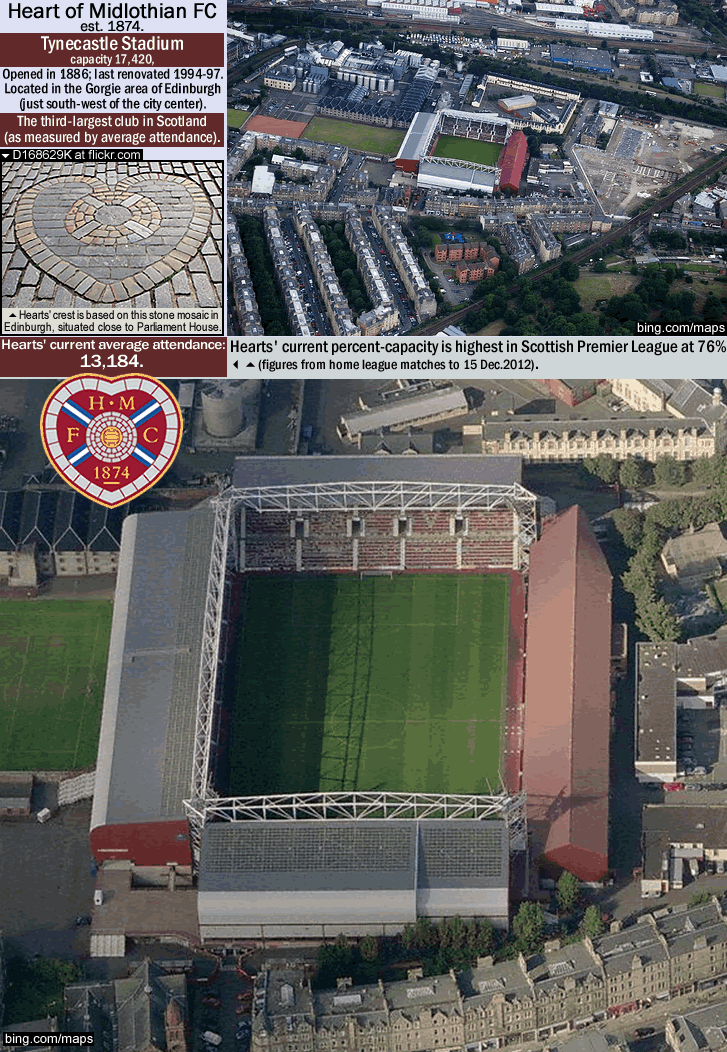
Photo credits above –
Photo of Heart of Midlothian stone mosaic byD168629K at flickr.com.
Wide aerial photo of Gorgie area incl. Tynecastle uploaded by footballforums.net/forums/thread.
Screenshot of satellite view of Tynecastle from bing.com/maps.
…
As of 15 December 2012, 10th place, Ross County FC / 6 points above last place (ie, relegation).
Ross County FC est. 1929. Victoria Park (aka the Global Energy Stadium for sponsorship reasons), capacity 6,300 (all-seated), opened in 1929; last renovated in 2012. Located in Dingwall, Highlands Council District. Dingwall town population is around 5,500 {2011 estimate}.
Ross County FC had it’s Scottish first division debut in July 2012. The club met SPL ground standards by making the stadium an all-seater. No new capacity was created, however. Victoria Park’s capacity remains 6,300, which is about 800 more than the entire population of the town of Dingwall (!). Attendance has increased by about 1,400 per game to a current average of 4,341 per game (that is a decent 69 percent-capacity). The Jail End (seen below, in the lower photo in the center), was turned from a terraced stand to a seated stand. Also, a new, roofed North Stand was built (see smaller photo below at right), under-soil heating was installed, and parking capacity was increased. Dingwall is 15 miles (or 25 km.) west-north-west of Inverness. The 2012-13 SPL features the first-ever top-fllght-versions of the Highland derby.
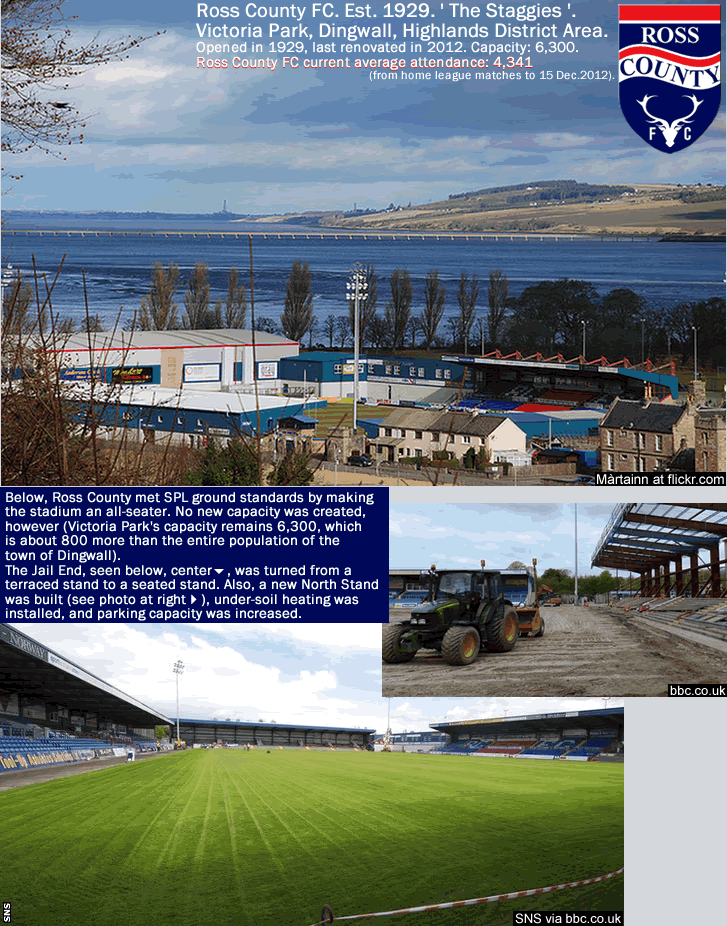
Photo credits above –
Màrtainn at flickr.com.
‘Ross County revamp Victoria Park’, bbc.co.uk.
SNS via bbc.co.uk.
…
As of 15 December 2012, 11th place, St. Mirren FC / 5 points above last place (ie, relegation).
St. Mirren FC est. 1877. St Mirren Park (aka Greenhill Road), capacity 8,106 (all-seated), opened in 2009. Located in Paisley, Renfrewshire Council area. Paisley is 7 miles (or 11 km.) west of Glasgow city center, and is part of the Greater Glasgow conurbation. Paisley’s population is around 80,000 {2012 estimate}.
St. Mirren FC domestic honors: 3 Scottish Cup titles (first in 1926; last in 1987).
St. Mirren FC current average attendance: 4,501 per game (from home league matches to 15 Dec.2012}.
In 2007, St. Mirren sold it’s old ground, Love Street, to the Tesco retail chain and with those proceeds they were able to pay off their debts and build their new ground on a site about .6 km west, adjacent to a National Rail link. St. Mirren Park opened in January 2009. Capacity 8,023 (all seated). The stadium was built to have a capacity of around 2,700 less than Love Street. Since then, St. Mirren have consistently played to average crowds of around 4,400 to 4,600, at around a 54 to 58 percent-capacity. St. Mirren’s 58 percent-capacity in 2011-12 was 4th best in the SPL.
Here is a nice little article about the St Mirren FC crest through the years…from stmirren.info (‘The original and best historical database of St. Mirren F.C.’), ‘St Mirren Crest‘ (stmirren.info).
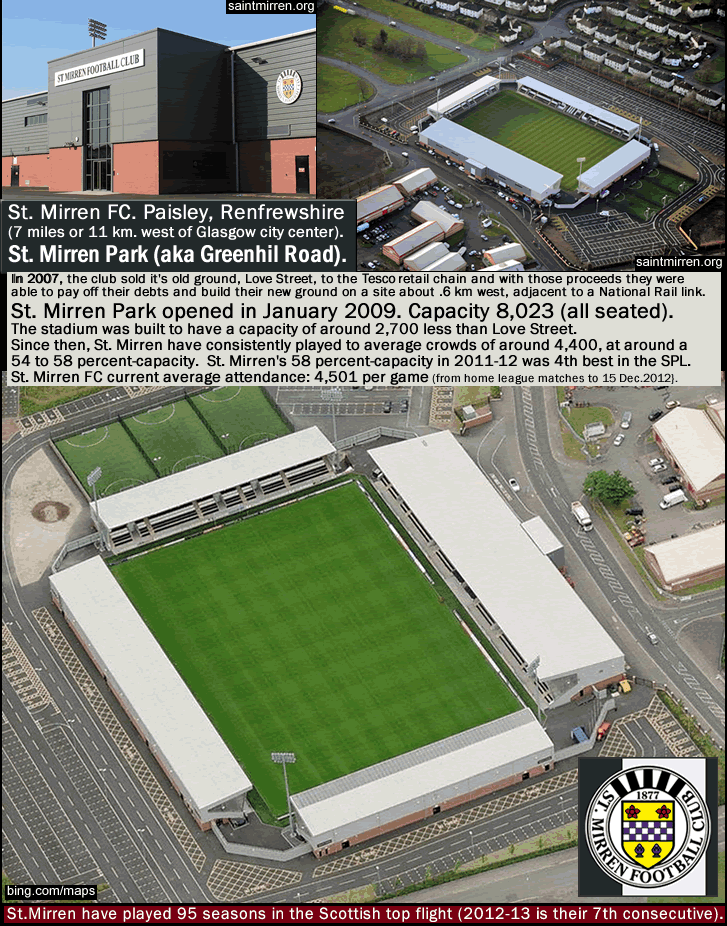
Photo credits above –
saintmirren.net.
bing.com/maps.
…
12th place, Dundee FC.
Dundee FC est. 1893. Dens Park, capacity 12,085, opened in 1899; last renovated in 1999. Dundee is in the eastern central Scottish Lowlands on the north bank of the Firth of Tay (the Firth of Tay is a sea bay that feeds into the North Sea)., 120 miles (193 km.) north-east of Glasgow. Dundee City population is around 152,000 {2011 estimate}, making it the fourth largest city in Scotland.
Dundee FC domestic honord: 1 Scttish title (in 1962). 1 Scottish Cup title (in 1910).
Dundee FC current average attendance: 6,342 (from home league matches to 15 Dec.2012}.
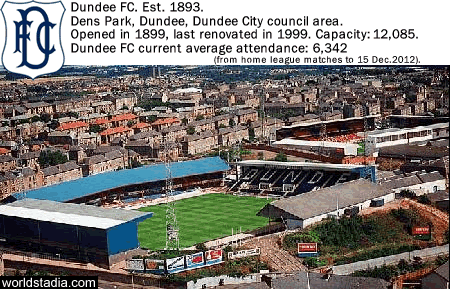
Photo credit above -
worldstadia.com/stadium.
…
___
Thanks to David at www.St.Mirren.info, for information on St. Mirren, http://www.stmirren.info/id46.html.
Thanks to Historical Football Kits site for the photo of the 2012-13 125th anniversary Celtic home jersey badge, http://www.historicalkits.co.uk/Scottish_Football_League/Celtic/Celtic.htm.
Thanks to Footballfashion.org for colors of home jerseys such as footballfashion.org/hibernian-201213-home-kit; footballfashion.org/inverness-caledonian-thistle-fc-201213-home-kit.
Thanks to Footballkitnews.com for colors of home jerseys such as footballkitnews.com/kilmarnock-2012-2013-home-and-away-strips.
Thanks to Ross County official site for image of the slightly re-tooled Ross County FC crest (it has a different font now, and the blue parts of the shield are a much darker navy blue, Rosscountyfootballclub.co.uk. Store.rosscountyfootballclub.co.uk/category/8-replica-home-kit.aspx.
Thanks to the contributors to the pages at en.wikipedia.org, ‘2012–13 Scottish Premier League‘.
Thanks to soccernet.espn.go.com for Scottish attendance figures from 2011-12, http://soccernet.espn.go.com/stats/attendance/_/league/sco.1/year/2011/scottish-premier-league?cc=5901. Thanks to soccerway.com for Scottish stadium capacities and for current Scottish attendance figures from 2012-13. Thanks to E-F-S site for historical Scottish attendance figures, http://www.european-football-statistics.co.uk/attn.htm.
Thanks to these 2 sites for mileage and kilometer distances between locations…
City Distance Tool at http://www.geobytes.com/CityDistanceTool.htm?loadpage [I used this site to obtain 'as-the-crow-flies' distances].
UK Distance Calculator at http://distancecalculator.globefeed.com/uk_distance_calculator.asp [I used this site for road-travel distances - that is, for obtaining a distance when there is water between points A and B)].
